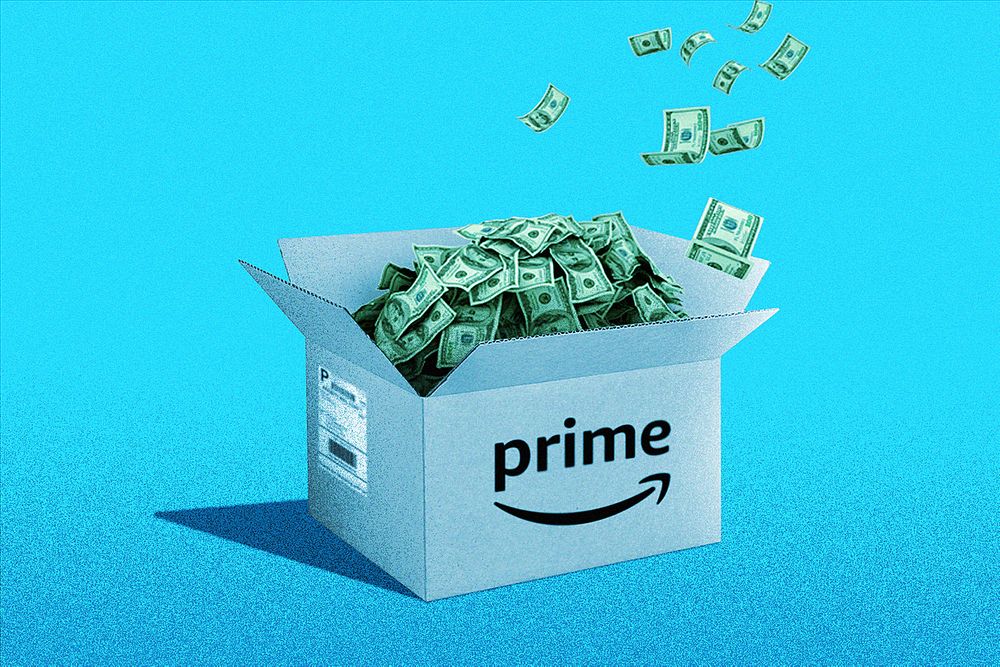|
Well, it’s finally March. 365 days ago, Retail Brew covered the fast food breakfast wars and brands’ adjustments for an impending pandemic. Back then, we had no idea how often we’d write “Covid-19 store closures” in the year ahead. Here’s hoping the end of this era comes soon.
In today’s edition:
- Target’s DTC diffusion lines
- Fanatics expands to China
- Amazon wins over brands
— Halie LeSavage, Katishi Maake
|
|

Francis Scialabba
|
After persuading DTC skincare, pet supply, and shave brands to move offline, Target’s convincing DTC apparel brands to join its ranks. But there’s more to it than a site-to-shelf transition.
Check the tags: Hatch and Lively joined Target’s roster via diffusion collections. That’s linesheet speak for an affordable spinoff of a larger brand.
- Hatch’s upscale maternity clothing can cost up to $400/item on its direct channel. Its Targetified pieces, a line called “The Nines by Hatch,” never pass $40.
- The price gap between intimates line Lively and its diffusion line, All.You.Lively, is significantly narrower: OG products retail for $35, while diffusion items cost $25.
The rationale: Target already has ten billion-dollar brands, plus annual designer collabs. But Target EVP and Chief Merchandising Officer Jill Sando told Retail Brew that its new diffusion lines...
- “Give our guests convenient access to innovative products as part of their regular Target run.”
- “Provide DTC brands with an opportunity to get their product into the hands of more consumers who otherwise might not have heard of a brand, and also gain the benefits of Target’s suite of fulfillment options.”
Target’s saving, too. Through a diffusion line, it can “bring different assortments in and out as consumer tastes change without needing to invent new brands itself,” Lauren Bitar, head of retail consulting at RetailNext, told us.
Journey to the center of America
From the DTC POV, adapting core products for Target can expand brands’ reach beyond their typically urban and coastal clientele.
- Michelle Cordeiro Grant, founder and CEO of Lively, told Retail Brew that its diffusion collection came from five years of community feedback—and was “the most accessible way possible” to meet potential shoppers where they are.
- Hatch founder and CEO Ariane Goldman said Hatch's diffusion line reaches “both our core customer and the woman who craves style conscious maternity options at a more accessible price point.”
Diffusing vs. diluting? Dampening brand value isn’t a risk for these DTC brands, yet. “Target is in a unique position in that it is seen as a discounter with cachet,” Bitar told us. And in a national retailer, “the DTC brand can also experiment with other price points, looks, and ideas it might not want to risk damaging its flagship brand's reputation over,” she said.
Looking ahead...Sando said Target’s diffusion lines aren’t limited-time engagements like its annual designer collaborations. And Target could soon allocate more hangers to DTC offshoots.
“Our goal with digital-first collections is to continue increasing differentiation in our product assortment,” Sando told us, “and DTC brands will continue to play an important role in our assortment, including apparel.”
|
|

Francis Scialabba
|
The world’s largest seller of licensed sports merchandise just [insert your favorite sports metaphor here]. Fanatics is entering a joint venture with Hillhouse Capital Group, Asia’s biggest private equity firm, to set up shop in China.
Fanatics China, based in Shanghai, will establish local e-comm partnerships for international teams and leagues. With Hillhouse’s help, Fanatics enlisted Alibaba and Tencent to power the online stores; IRL shops are also in the works.
An untapped market: In China, fandoms for US sports are growing with a nudge from mobile platforms like WeChat. Fanatics thinks it can direct those fans to its e-comm channels.
- The 50/50 joint venture is expected to be worth more than $1 billion.
- Fanatics believes China’s licensed sports apparel market could be worth $3 billion to $5 billion.
A slow burn: After 25 years in business, Fanatics has been on a Steph Curry-esque tear of late.
- Annual revenue jumped to more than $3 billion last year from $2.5 billion in 2019.
- E-comm, a decades-old Fanatics business segment, increased 30% over the first 6 months of 2020.
Looking ahead...Fanatics’s rising valuation ($6.2 billion as of its 2020 Series E) and international expansion are feeding rumors the company will IPO.
|
|

|
Even though lots of businesses have moved operations online in the past year, it might surprise you to know that the tech employees are using still ain’t cuttin’ it.
Some shocking stats:
- The average employee loses three hours of productivity per week to tech and software problems.
-
79% of office workers agree they could get more work done faster with up-to-date software.
- And nearly 70% would be willing to take a pay cut to have software and tech that’s twice as good as their current rig.
The wrong HR and payroll tech can certainly contribute to wasted time, too.
If you wanna streamline your workforce’s tech and software setups, then set up a meeting with Paycom today.
|
|

Francis Scialabba
|
Consumer brands and socially conscious TikTok teens have the same open secret: When push comes to shove, they can’t avoid Amazon. 78% of retail businesses now sell on Amazon, an increase from 55% in 2020, according to a recent Feedvisor and Zogby Analytics study of 1,000+ brands.
Sold on advertising: Brands swarmed Amazon's advertising platform during the pandemic. Of the brands surveyed...
- 88% use Amazon Advertising, a 21% bump from last year.
- 59% of brands that advertise said they spend more than $60,000/month, up from 38% in 2020.
The shift’s driving results: 90% of ad buyers experienced at least a 4x return.
It’s not just Amazon. More than half (53%) of brands consider online marketplaces the best sales channels. That figure was just 43% in 2020.
- 57% of brands on Amazon also employ other e-comm platforms—like Walmart, where 48% of respondents spend at least $60,000 on ads.
- Others are still playing catch-up: 27% and 21% of those surveyed say they’re open to using Google Shopping and Kroger, respectively.
The takeaway: Despite all those WSJ and DOJ investigations, Amazon’s still the first place brands are selling to scale online. That’s in line with consumer habits: More than half of adults start with Amazon when making an online purchase, per ChannelAdvisor data cited by eMarketer.
|
|
-
Oatly entered a nationwide partnership with Starbucks.
-
Klarna is valued at $31 billion after a new funding round.
-
Tonal, an at-home fitness brand, will open 40 mini-stores inside Nordstrom locations.
-
Best Buy laid off 5,000 employees and plans to close more stores.
-
A Trader Joe’s employee was reportedly fired for requesting enhanced Covid-19 cleanliness measures.
|
|

|
Catch you on the curb side. Curbside pickup has never been more popular, with 78% more people “clicking and collecting” than pre-pandemic. As you hone your messaging to acquire these customers, Sailthru with Liveclicker has identified four unique customer personas who’ll meet you at your doorstep. Download the 2021 guide to learn more.
|
|
|
At the mall, it’s where band tees are the only tees. In Retail Brew, it’s where we invite readers to weigh in on a trending retail topic.
Halie’s 1997 dream of moving into Limited Too is coming true at some US malls, with a twist. Several shopping centers are converting their square footage from retail → residential.
- Pyramid Management Group, owner of several Northeastern malls, said every mall in its portfolio will eventually have residential complexes.
- In Indianapolis, IN, the city’s first mall is converting some underused space into apartments.
We want to know: What’s the best new use for underperforming malls? Cast your vote here.
Following up: Before Costco one-dollar-upped retailers’ minimum wage increases on Thursday, we asked whether all retailers should bump employee earnings to at least $15/hour. Readers were divided: 47.3% said yes, 47.8% said no, and 4.8% weren’t sure.
|
|
|
Retailers’ e-comm growing pains began with pandemic-induced shipping delays. Now, they’re contending with order stoppages pre- and post-purchase.
- Without traditional window shopping, some e-consumers are turning to reckless cart abandonment. That is, filling virtual carts without hitting “Purchase.” (CNBC)
- Is there a sea shanty for shipping containers lost to the waves? Retailers may need to compose one, as errors on the high seas delay or destroy merchandise along shipping routes. (Bloomberg)
|
|
|
Catch up on the Retail Brew stories you may have missed.
|
|
|
Written by
Halie LeSavage and Katishi Maake
Was this email forwarded to you? Sign up here.
|
ADVERTISE // CAREERS // SHOP
Update your email preferences or unsubscribe here.
View our privacy policy here.
Copyright © 2021 Morning Brew. All rights reserved.
22 W 19th St, 8th Floor, New York, NY 10011
|
|









